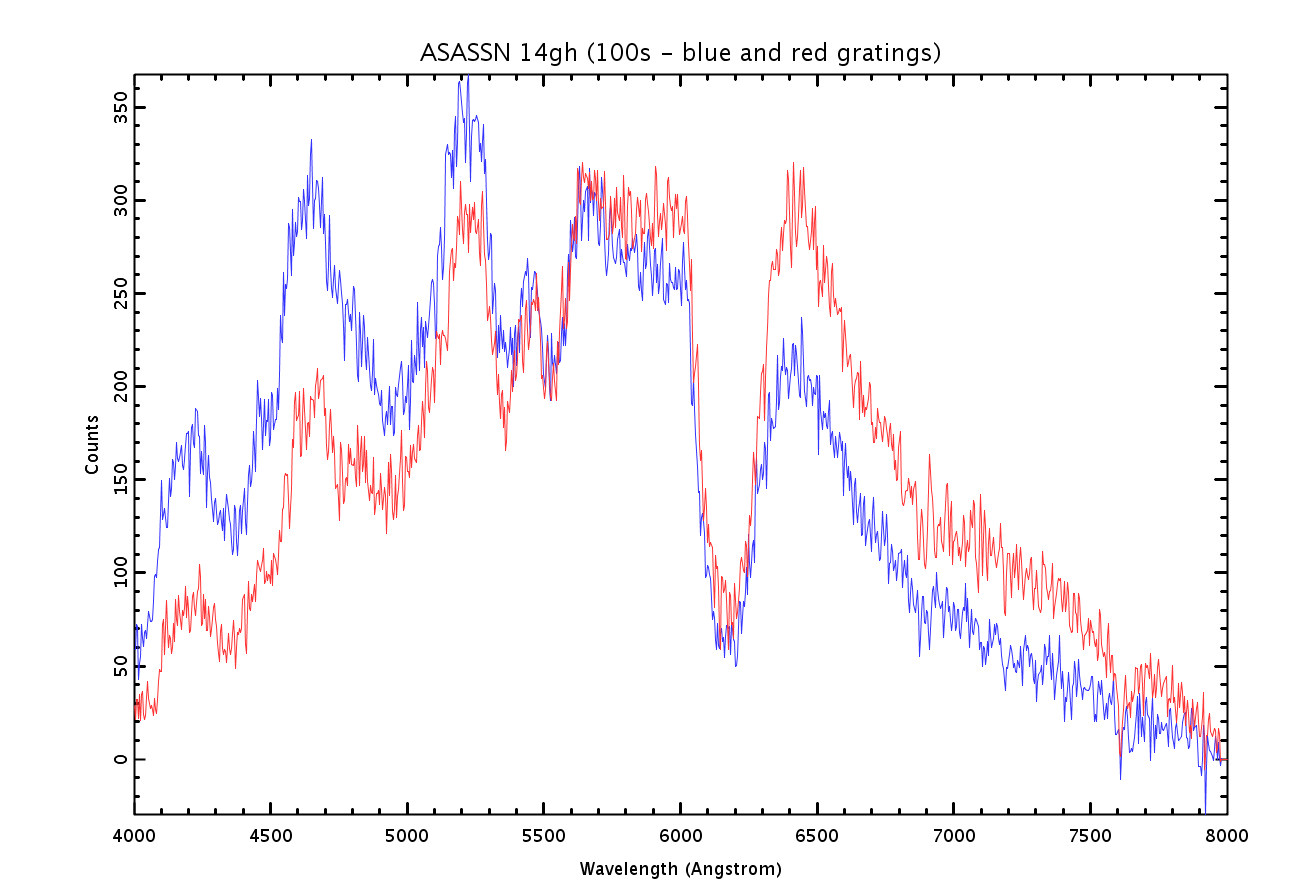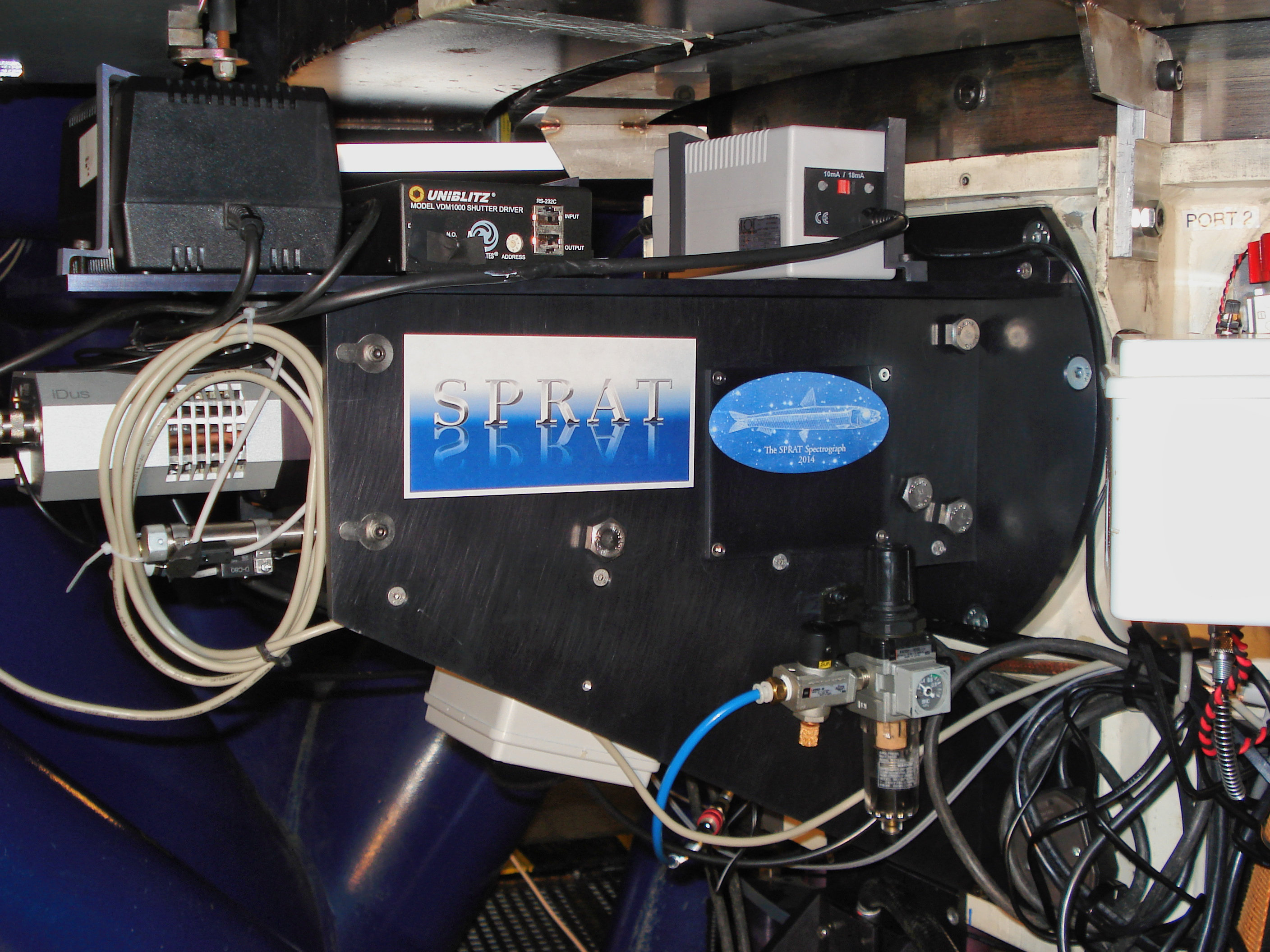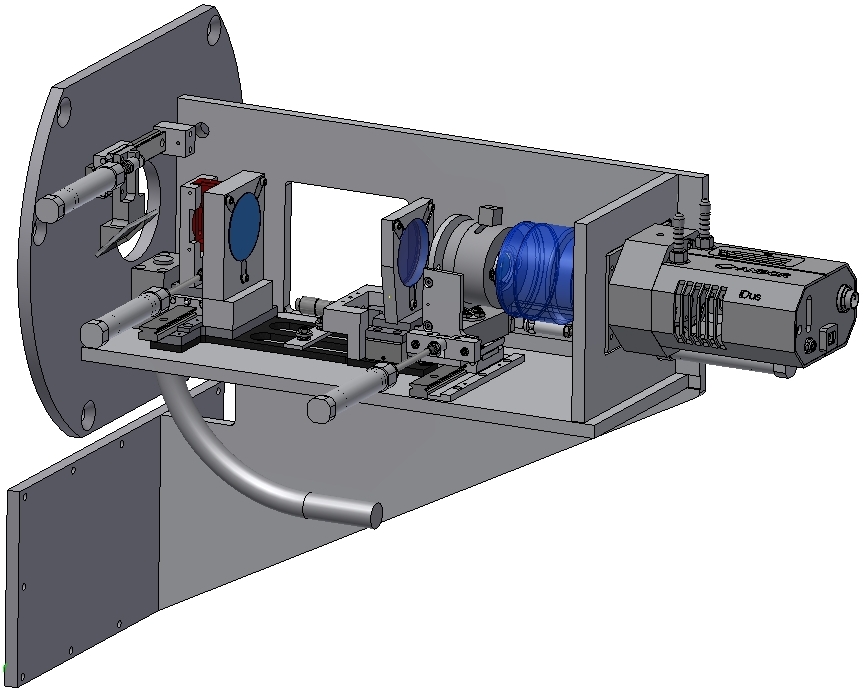Astronomers from the Astrophysics Research Institute (ARI) of Liverpool John Moores University recently announced the successful commissioning of an exciting new instrument on the Liverpool Telescope to colleagues and collaborators at an international conference in Poland. The conference, which was held in Warsaw in early September, brought together researchers from across Europe who are interested in observing variables and "transients" - objects that vary in brightness suddenly and dramatically. The meeting focused on objects that will be discovered with the GAIA space telescope, an ESA mission that was launched late last year. The LT will undoubtedly be a key player in this area of astronomical research.
Affectionately known as SPRAT, the SPectrometer for the Rapid Acquisition of Transients will provide astronomers from LJMU, the rest of the UK, and overseas with the opportunity to rapidly observe and analyse the light from all manner of variable objects. SPRAT will be particularly useful for studying novae and type Ia supernovae - stars in binary systems that undergo sudden outbursts - and core-collapse supernovae, massive stars that at the end of their lives collapse under their own weight causing a massive explosion of light and energy. Both areas of research are of particular interest to astronomers at the ARI.
 Two first-light spectra of supernova
ASASSN 14gh obtained with SPRAT during commissioning on Thursday, 4
September, 2014 (target courtesy D. Bersier/LJMU). The red and blue
spectra show how the instrument may be optimised for observations at
long or short optical wavelengths, respectively. The target itself
was recently discovered by ASAS-SN, the
All-Sky Automated Survey for Supernovae.
Two first-light spectra of supernova
ASASSN 14gh obtained with SPRAT during commissioning on Thursday, 4
September, 2014 (target courtesy D. Bersier/LJMU). The red and blue
spectra show how the instrument may be optimised for observations at
long or short optical wavelengths, respectively. The target itself
was recently discovered by ASAS-SN, the
All-Sky Automated Survey for Supernovae.
SPRAT was designed and built entirely by LJMU scientists and engineers subsidised mainly by internal LJMU funding. The instrument, the brainchild of Prof. Iain Steele, the Director of the Liverpool Telescope, was taken to La Palma in the Canary Islands on 30th August by a team from LJMU comprising Stuart Bates, Robert Smith and Andrzej Piascik. Joined by fourth team member Dirk Raback they spent the first week in September mounting the instrument on the telescope and carefully characterising it, in preparation for robotic use later in the month.
Andrzej, a PhD student at LJMU, has spent the last twelve months fine-tuning the performance of SPRAT in an optical lab in Liverpool Science Park (where the LT group is based). He joined the team on site and will present the instrument to the community at the Warsaw Conference. Meanwhile, testing will continue from Liverpool: software engineers Neil Clay, Chris Mottram and Steve Fraser will ensure that the instrument can be controlled remotely and robotically, that is, by the complex control system used to operate the telescope. Mike Tomlinson will provide IT support, while astronomers Jon Marchant, Rob Barnsley and Chris Davis will ensure that the data obtained are suitable for scientific use.
The commissioning of SPRAT brings the instrument suite on the LT to a grand total of six; a seventh instrument, the IO:I near-infrared imager, is currently being developed and will hopefully be commissioned later this year. In the meantime, SPRAT will undoubtedly prove to be an invaluable tool to a wide range of researchers in transient and time-domain astronomy.





